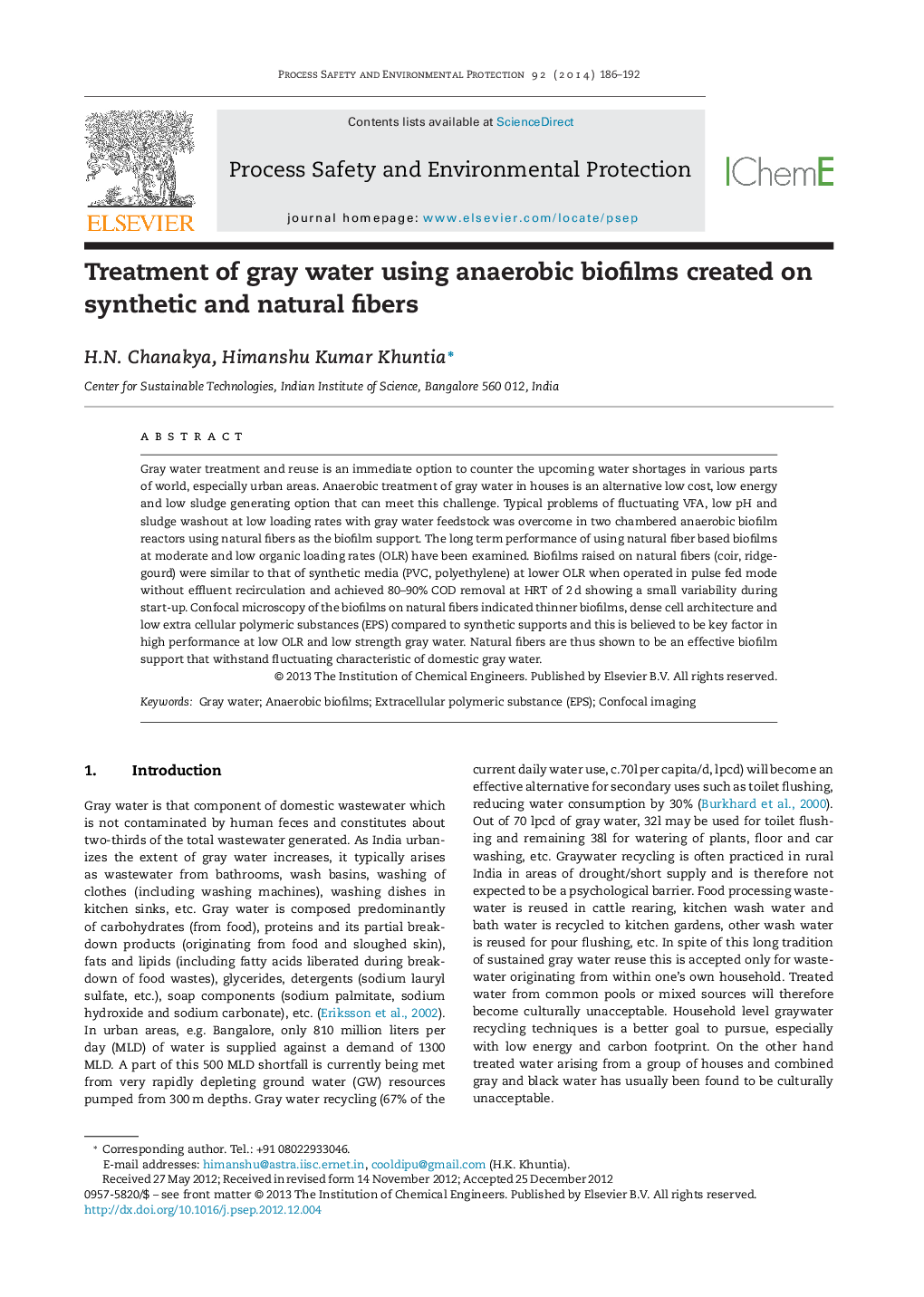| Article ID | Journal | Published Year | Pages | File Type |
|---|---|---|---|---|
| 588339 | Process Safety and Environmental Protection | 2014 | 7 Pages |
Gray water treatment and reuse is an immediate option to counter the upcoming water shortages in various parts of world, especially urban areas. Anaerobic treatment of gray water in houses is an alternative low cost, low energy and low sludge generating option that can meet this challenge. Typical problems of fluctuating VFA, low pH and sludge washout at low loading rates with gray water feedstock was overcome in two chambered anaerobic biofilm reactors using natural fibers as the biofilm support. The long term performance of using natural fiber based biofilms at moderate and low organic loading rates (OLR) have been examined. Biofilms raised on natural fibers (coir, ridge-gourd) were similar to that of synthetic media (PVC, polyethylene) at lower OLR when operated in pulse fed mode without effluent recirculation and achieved 80–90% COD removal at HRT of 2 d showing a small variability during start-up. Confocal microscopy of the biofilms on natural fibers indicated thinner biofilms, dense cell architecture and low extra cellular polymeric substances (EPS) compared to synthetic supports and this is believed to be key factor in high performance at low OLR and low strength gray water. Natural fibers are thus shown to be an effective biofilm support that withstand fluctuating characteristic of domestic gray water.
► Two zone anaerobic biofilm reactors were used to treat gray water. ► PVC biofilm support showed better performance at higher organic loading rates. ► At lower loading rates natural materials outperformed synthetic support materials. ► Confocal imaging showed higher EPS for biofilm formed on synthetic materials. ► Natural materials were sustained in the bioreactor even after 400 days of operation.
